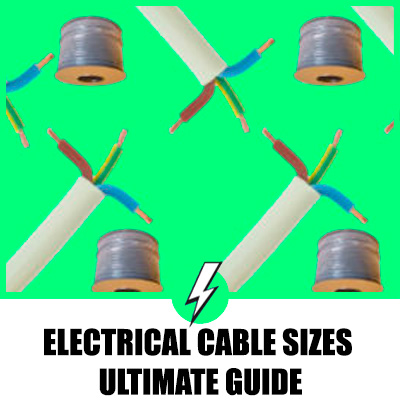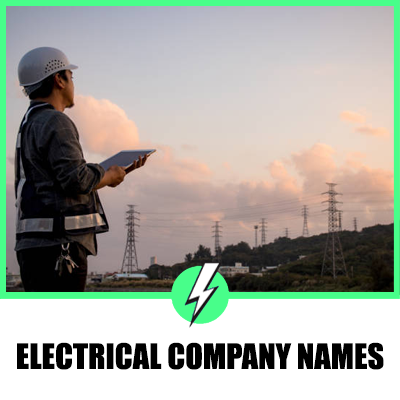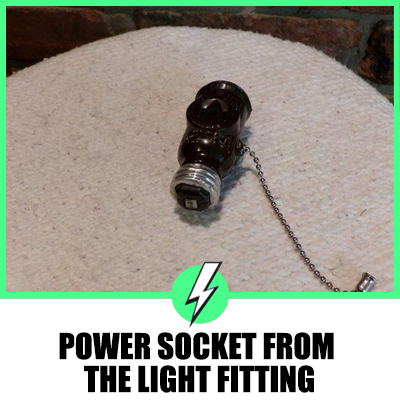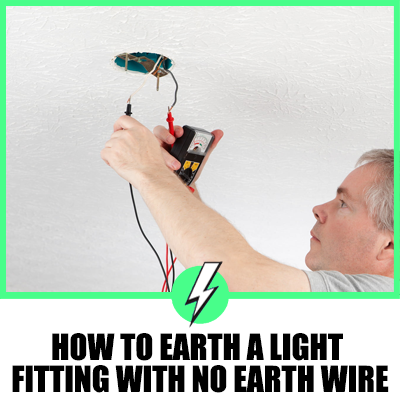How Do You Select The Correct Rcd Or Rcbo For Circuit Protection?
With changes to the 18th Edition selecting the correct circuit breaker for circuit protection should be a little easier as some ambiguity has been removed. But if you are a competent DIY enthusiast, how do you know what the right circuit breaker should be and if you should use RCD or RCBO?
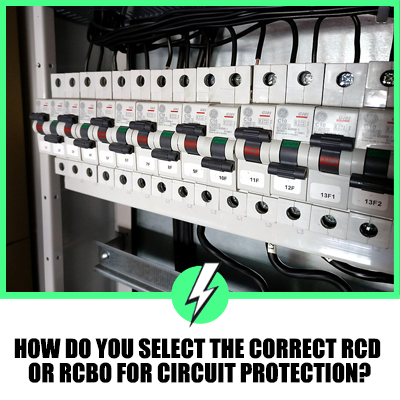
The good news for new and qualified electricians is that the 16th Edition and onsite guide have you covered. With a little experience, you will know the design circuit parameters for the appliance requirements being installed.
This article will go through some of the basics as a refresher or guide so that you can choose the correct circuit breaker. The article will also answer frequently asked questions, giving you a rounded overview of the subject.
Let’s dive in.
Contents
Which should you use, RCD or RCBO A C?
Let’s define what we are dealing with in selecting circuit breakers.
| RCD stands for | RCBO Stands for |
|---|---|
| R Residual | R Residual |
| C Current Device | C Current |
| D Device | B Breaker |
| O Overcurrent |
Why use an RCBO over an RCD? As an example, what would happen if the line and neutral in a circuit touched, would the RCD trip?
A huge amount of current would flow through the circuit, but the current would be the same magnitude as the RCD protector, meaning that it would not trip.
In essence, the RCD or RCCB does not have the facility to protect from a current overload or a short circuit.
Whereas the clever RCBO with overload protection can detect short circuits and an overloaded circuit making the device trip for safety.
Do we need circuit protection to stay compliant with BS 7671, and what are the new regulations pertaining to RCBO A and RCBO AC?
How do RCBOs protect against DC saturation?
What is the difference between RCBO A and RCBO AC? For many years RCBO A was a standard installation breaker protection that worked well with simple resistive loads.
However, with advances in technology in home appliances such as smart washing machines and smart refrigerators, and advanced gaming consoles, the landscape of simple resistive loads has shifted as these smart devices infuse DC power into your AC power system.
So, what’s the problem with DC seepage into an AC system? It is a big problem that DC in an AC system will stun an RCBO, RCD, or any other circuit breaker you may be using, negating its protection from overcurrents, earth faults, and shock.
You may think that your house does not use exotic equipment such as game consoles, and the PC is rarely plugged in. Still, its simple devices full of electronics, such as washing machines and TVs, contribute to the DC saturation of the RCBO.
The problem will only increase as more consumers install photovoltaic systems, battery storage, and EV chargers.
In a nutshell, all this means that the standard RCBO may become obsolete as it can not withstand these new fault conditions found in modern circuits.
The good news is a type A RCBO can deal with up to 6ma of DC in the circuit and remain functional in the event of a fault.
If you feel that the amount of DC seepage could still compromise the circuit, you may consider installing RCBO B or F to cover the circuit adequately.
Is there a calculation for selecting the size of the MCB or RCBO?
Yes, it’s a simple calculation, but it has your onsite guide available and maybe a calculator at hand.
As an example, say you wish to install an electric shower with a design load of 7Kw, the design load known as Ib is already specified, so divide the Ib by 230V (UK power supply), which equals 30.43 amps.
Look in the onsite guide for RCBO protection and select an equal or above rating for your protection. It is easy. In this instance, the correct breaker size will be 32 amps.
Once you have this figure for the breaker size, you can then select your cable and length in the onsite guide, such as T&E at 62 m without a power drop.
What is size circuit breaker needed to trip? It’s not a guessing game, although years of experience will dictate what size of the breaker can be used. However, for students or competent DIYers, you will need to calculate the design load ( Ib ) as shown above to see the correct RCBO/ MCB.
What size circuit breaker should be used for lighting?
RCD or RCBO. You will need to calculate the total load on the circuit, such as how many watts the total number of light bulbs add up to in the circuit. In general, you can use a 15 amp breaker for a radial light circuit or even as low as 6 amps.
For good writing practice, keep your light on a separate circuit, say from power outlets.
What size breaker should be used for power outlets?
As many outlets as you can distribute across your house should be connected to a single circuit. Just remember only to use a single circuit’s maximum load. A useful rule of thumb is to estimate that each outlet will only require a maximum power consumption of 1.5 amps, allowing 10 outlets to be connected to a single 20-amp circuit.
In all cases, it pays to run a simple calculation that is no more complicated than basic high school calculations such as multiplication, division, and addition.
What size circuit breaker is needed for a kitchen?
The biggest draw of electricity in the kitchen will be the cooking appliances. If you have a freestanding electric cooker with an integral hob and oven and grill will have almost an identical power consumption to a modular cooking arrangement such as an independent hob oven and grill.
As a general rule of thumb, the circuit breaker for a cooker is going to be 32 amps, and there will be an isolation switch in between the breaker normally located close to the cooker.
If you come across an older property, you will find a 30 amp fuse supplied by a 6mm2 cable.
The information for cooker circuits can be found in appendix H of the onsite guide.
Other kitchen appliances, such as the refrigerator, maybe just connected to a 20amp radial circuit which is fine. Microwaves and the like will be used on the same circuit.
Kitchens work on diversity, meaning that most appliances other than the fridge are not switched on simultaneously. If you calculate the maximum load capacity of kitchen appliances like the oven, grill hob, washing machine, tumble dryer, and dishwasher all working simultaneously, the maximum load would be massive, exceeding the incoming power supply.
However, homes don’t work this way, so electrical diversity is included in the calculations. You can find this information in the onsite guide and the 18Th Edition.
What’s the correct size breaker for a living room?
Generally, the living area with socket outlets will have a 20 amp breaker in the consumer unit. Using a type A- RCBO for the living room appliances would be a great idea. There will be complicated electronics and possibly laptops and game consoles that are seeping DC power into the AC system saturating the AC breakers and rendering them useless in a faulty condition.
A 20 amp breaker for the living room is sufficient even if there are many outlet sockets. It’s unlikely they will all be operating at full capacity at any one time, and if they do, your RCBO has overload protection and will save the day.
What size circuit breaker should I use when camping?
Most campgrounds in the UK have a three-pin connector with a 16 Amp rating, which can deliver 230V power, much as at home.
Camping sites across the UK that supply power hookups are fitted with RCD protection for your safety but having your RCD-protected power outlets is a good idea.
Below is a chart of the typical power available and protection provided at the point of hook-up on the camping site.
| SITE AMPS | CALCULATION | HOW MUCH POWER |
| 16A | 230V x 16A | 3.68kW |
| 10A | 230V x 10A | 2.3kW |
| 5A | 230V x 5A | 1.15kW |
What size Circuit breaker does air conditioning require?
If you use air conditioning, you will understand how power-hungry they can be from your electricity bill, but the size of the breaker depends on the size of the air conditioning unit. Is it a simple window type or a spit air conditioning unit serving multiple rooms?
A large air conditioning unit for domestic use may need a 64Amp RCBO, but it can range anywhere from 32 amps to the higher end of the scale.
Air conditioning units are complex. Using pumps to change gas to liquid with fans continually running, the maximum power load is high.
What size circuit breaker do you need for a 6mm2 cable?
6mm2 cable is usually designed for cooker circuits; in many cases, the cable is wrongly specified as 4mm2 cable will suffice. It’s specified wrong due to the old fuse board using 30 amp fuses. They required this size of cable.
By and large, you would be wiring a 6 mm2 cable to a 32 amp RCBO.
What size circuit breaker is a dishwasher connected to?
Typically a domestic dishwasher uses a 15 amp circuit breaker. Dishwashers draw a lot of electricity, but they are not frequently used, sometimes not even once a day. Because of diversity in the kitchen, the dishwasher will share the RCBO with other appliances.
It’s the circuit that is protected rather than the appliance, and of course, a fault on the circuit will trip the RCBO and protect the appliance and vice versa if needed.
What size circuit breaker do I need for electric gates?
It will depend on the size and opening mechanism of the gates. Still, typically, an electrician will need to deliver a 230V 10a power supply to install automatic gates on one side of the driveway entry.
The 230V supply cable must be buried in a trench inside an armoured conduit. The length of the route will determine the cable’s thickness. The wire will need to be thicker as the distance it must travel increases.
No matter how big or small the electrical project, you’ll need to get an electrical installation certificate from a professional expert.
This will certify that the completed work complies with British Standard BS7671 for electrical safety.
What size circuit breaker do you need for an EV charger?
You have to get an EV with a minimum 32 amp capacity. The general guideline is that 15 amps will offer around 15 miles of range in an hour of charging, while 32 amps would generally allow you to add 30 miles of range in an hour. (These estimates are a little bit optimistic.)
Remember that most plug-in hybrid vehicles (including the Nissan LEAF before the 2013 model) do not fully benefit from the higher rate. That’s alright, even if your current vehicle can’t fully utilize the higher amperage.
It’s still a good idea to have the ability to charge at least at the 32-amp level to avoid having to update in a few years if/when you purchase a new EV with a quicker onboard charger. Let friends who have faster-charging EVs use your garage to obtain a complete charge is also wonderful.
Note: A circuit breaker with a minimum 40 amp rating is required for a 32 amp EV.
What size circuit breaker do I need for the immersion heater?
The amperage figure that comes closest to being needed for a 40-gallon water heater is a 25-amp breaker. However, for a safer breaker size, I strongly advise utilizing 30-amps. While this happens, an 80-gallon heater fueled by 5500 watts and 240 volts will use 28.64 amps (5500W/240V x 1.25 continuous load).
